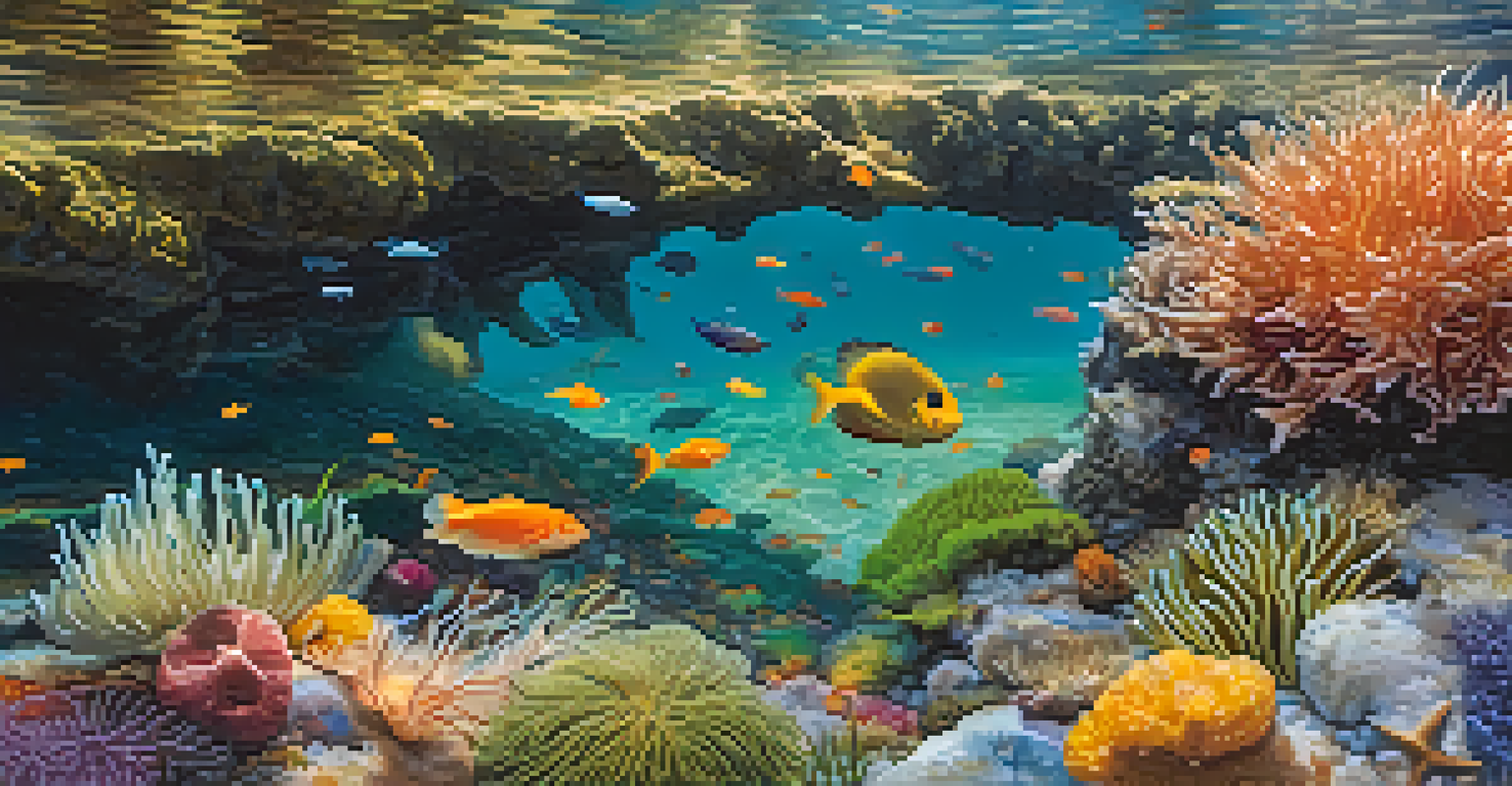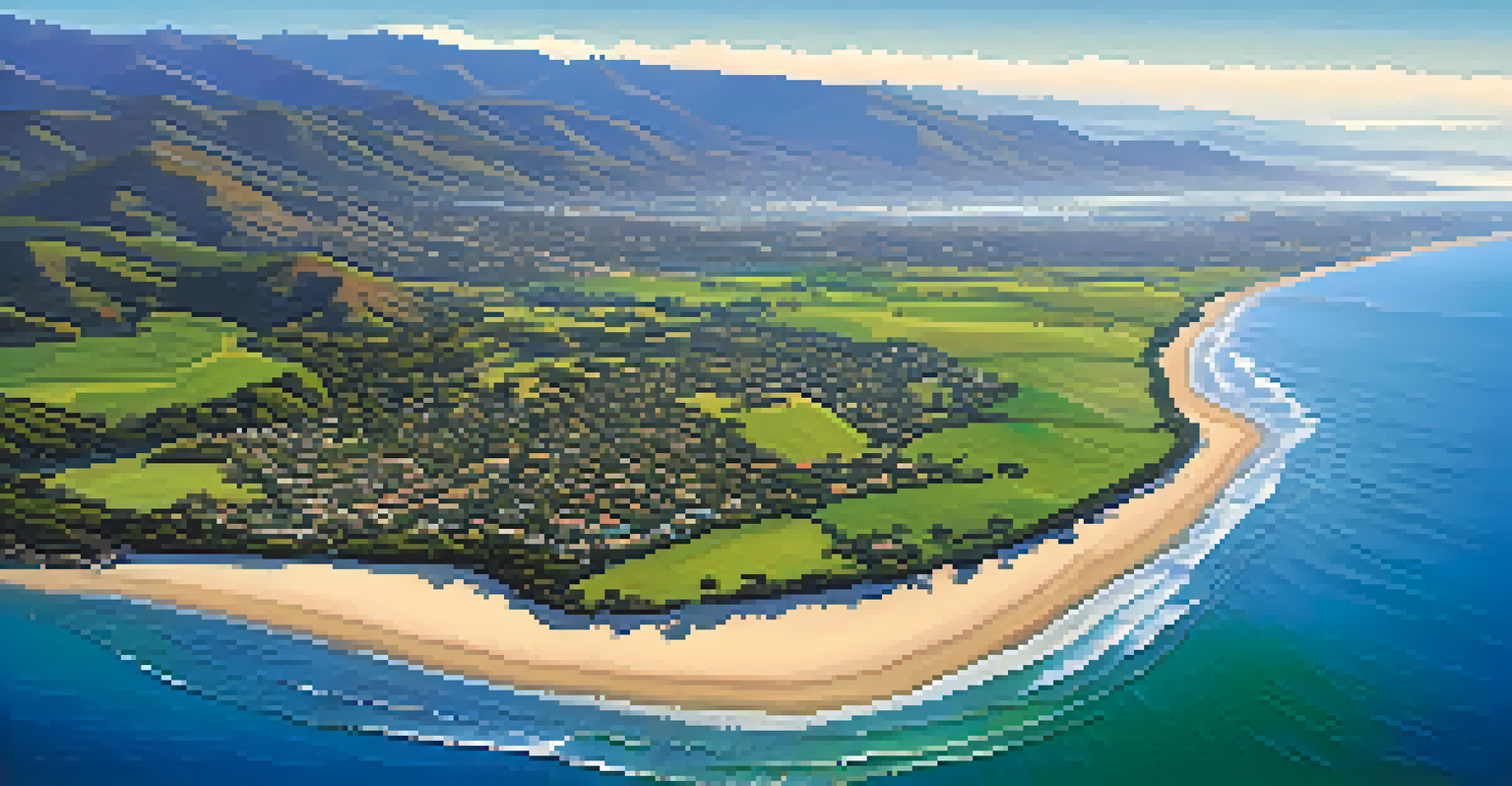Understanding the Threats to Santa Barbara's Coastal Ecosystems

Introduction to Santa Barbara's Coastal Ecosystems
Santa Barbara's coastal ecosystems are a vibrant tapestry of marine life, sandy beaches, and unique habitats. These areas are not only beautiful but also play a crucial role in the local economy and biodiversity. From kelp forests to tidal pools, each ecosystem supports a variety of species that contribute to the region's ecological balance.
We won't have a society if we destroy the environment.
However, these ecosystems face numerous threats that can disrupt their delicate harmony. Understanding these threats is essential for effective conservation efforts. By raising awareness, we can better protect these precious environments for future generations.
As we delve deeper into the various challenges, it's important to recognize that the health of these ecosystems directly impacts everything from local fisheries to tourism. This interconnectedness highlights why safeguarding our coastal areas is not just an environmental issue, but a community concern.
Climate Change and Its Impact
Climate change is like a slow-motion train wreck for coastal ecosystems. Rising sea levels, caused by melting glaciers and thermal expansion, threaten to inundate vital habitats. For instance, marshlands, which serve as critical nurseries for fish and birds, are at risk of disappearing, disrupting the entire food chain.

Moreover, increased ocean temperatures can lead to coral bleaching and the displacement of marine species. As fish populations shift in search of cooler waters, local fisheries can suffer economically and ecologically. This shift can create a ripple effect that impacts everything from restaurant menus to the livelihoods of fishermen.
Threats to Coastal Ecosystems
Santa Barbara's coastal ecosystems face significant challenges from climate change, pollution, invasive species, and overfishing.
In addition to these physical changes, climate change also exacerbates extreme weather events like storms and flooding. These events can destroy habitats, erode shorelines, and introduce pollutants into the water, further threatening the health of coastal ecosystems.
Pollution: A Growing Concern
Pollution is one of the most pressing threats to Santa Barbara's coastlines. From plastic debris littering beaches to chemicals running off from urban areas, pollutants can have devastating effects on marine life. Sea turtles, marine mammals, and fish often mistake plastic for food, which can lead to injury or even death.
The greatest threat to our planet is the belief that someone else will save it.
Additionally, nutrient runoff from agriculture can lead to harmful algal blooms. These blooms can deplete oxygen levels in the water, creating 'dead zones' where aquatic life cannot survive. The consequences of such pollution extend beyond just the ecosystems; they can also impact human health and local economies reliant on clean water and healthy fish stocks.
Efforts to combat pollution, like beach clean-up initiatives and stricter regulations on runoff, are crucial. By fostering community involvement and supporting sustainable practices, we can help restore and preserve the beauty of Santa Barbara's coast.
Invasive Species: A Hidden Threat
Invasive species pose a significant threat to Santa Barbara's coastal ecosystems, often outcompeting native species for resources. These non-native species can disrupt the balance of local ecosystems, leading to a decline in biodiversity. For example, the introduction of the green crab has been detrimental to local shellfish populations.
The spread of invasive species can be accelerated by human activities, such as shipping and recreational boating. Once established, these invaders can be incredibly difficult to eradicate, making prevention and management critical. Educating the community about the risks associated with invasive species is vital for protecting native habitats.
Importance of Conservation Efforts
Active conservation initiatives are essential for restoring habitats and protecting the biodiversity of Santa Barbara's coast.
Through collaborative efforts like monitoring programs and public awareness campaigns, we can help mitigate the impact of these invasive species. Protecting native flora and fauna ensures that our coastal ecosystems remain resilient and vibrant.
Overfishing: Straining Marine Resources
Overfishing is a pressing concern that threatens the sustainability of Santa Barbara's marine resources. When fish populations are harvested faster than they can reproduce, it can lead to a collapse of local fisheries. This not only affects the ecosystems but also the livelihoods of those who depend on fishing.
In addition to targeting specific species, overfishing often results in bycatch, where non-target species are unintentionally caught. This can lead to declines in populations of other marine life, further destabilizing the ecosystem. It's essential for fishery management practices to evolve and become more sustainable to ensure the health of marine environments.
Community engagement in sustainable fishing practices, such as catch limits and protected areas, can help reverse the trends of overfishing. By promoting responsible consumption and supporting local fisheries, we can work towards a more sustainable future for our oceans.
Coastal Development and Habitat Loss
Rapid coastal development poses a significant threat to Santa Barbara's natural habitats. As homes, businesses, and infrastructure expand, critical ecosystems like wetlands and dunes are often destroyed or degraded. This loss of habitat not only impacts wildlife but also reduces natural buffers against storms and erosion.
Furthermore, coastal development can lead to increased pollution and runoff, exacerbating existing environmental issues. As urban areas expand, the pressure on local resources grows, making it essential to balance development with conservation efforts. Sustainable planning can help mitigate these impacts and protect vital ecosystems.
Community Involvement is Key
Local community engagement is crucial for effective planning and sustainable practices that safeguard coastal environments.
Community involvement in planning processes is crucial for ensuring that development is done thoughtfully. By advocating for green spaces and responsible zoning, residents can help preserve the unique beauty and biodiversity of Santa Barbara's coastline.
The Role of Conservation Efforts
Conservation efforts play a vital role in safeguarding Santa Barbara's coastal ecosystems. Organizations and volunteers are working tirelessly to restore habitats, monitor wildlife, and educate the public about the importance of these environments. Initiatives like habitat restoration projects and clean-up events are essential for promoting ecological health.
Moreover, collaboration between government agencies, nonprofit organizations, and local communities can lead to more effective conservation strategies. By pooling resources and knowledge, these groups can tackle issues like pollution and habitat loss more efficiently. This united front is crucial for making lasting changes.

Ultimately, every individual can contribute to conservation efforts. Simple actions, such as reducing plastic use and participating in local clean-ups, can have a significant impact on the health of coastal ecosystems. Together, we can ensure that Santa Barbara's coast remains a thriving environment for generations to come.
Conclusion: A Call to Action
Understanding the threats to Santa Barbara's coastal ecosystems is the first step in addressing them. From climate change and pollution to overfishing and habitat loss, these challenges require immediate action. Each of us has a role to play in protecting our coastlines and ensuring their health and resilience.
By supporting local conservation efforts, advocating for sustainable practices, and educating ourselves and others, we can make a difference. It's about fostering a sense of stewardship for our natural resources. Every small action contributes to the larger goal of preserving the beauty and biodiversity of Santa Barbara's coast.
As we move forward, let's commit to being proactive in our efforts. Together, we can advocate for policies that protect our ecosystems and engage in practices that promote sustainability. The future of Santa Barbara's coastal ecosystems depends on our collective action today.